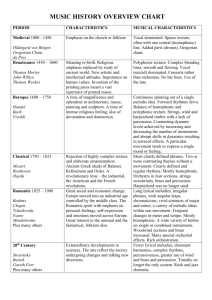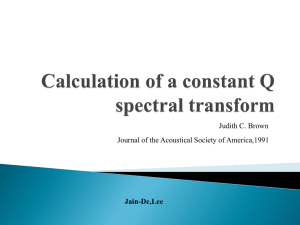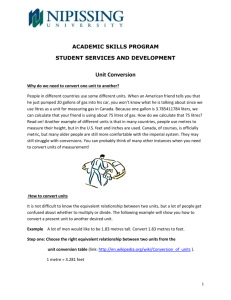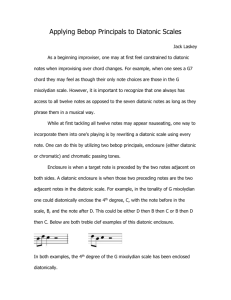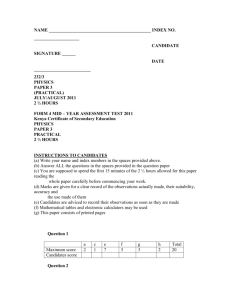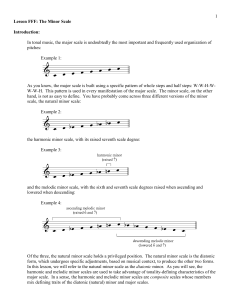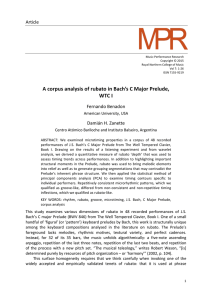Comparison of musical period
advertisement
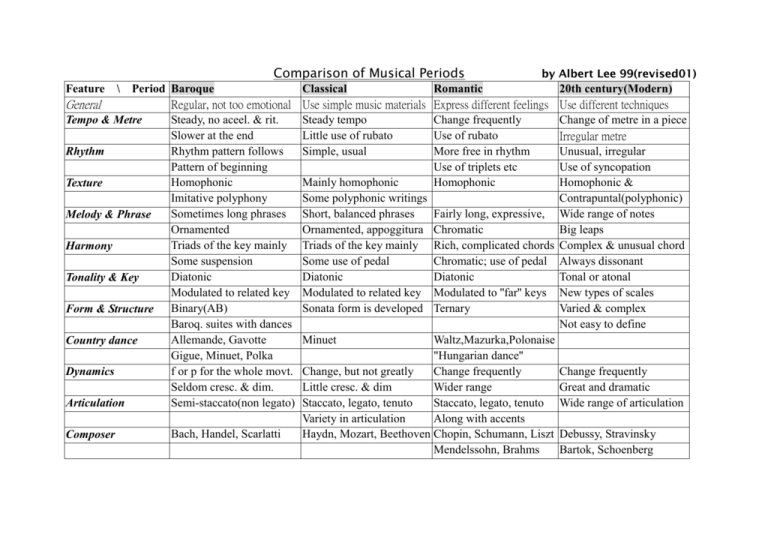
Comparison of Musical Periods Feature \ Period Baroque General Regular, not too emotional Steady, no aceel. & rit. Tempo & Metre Slower at the end Rhythm pattern follows Rhythm Pattern of beginning Homophonic Texture Imitative polyphony Sometimes long phrases Melody & Phrase Ornamented Triads of the key mainly Harmony Some suspension Diatonic Tonality & Key Modulated to related key Form & Structure Binary(AB) Baroq. suites with dances Allemande, Gavotte Country dance Gigue, Minuet, Polka f or p for the whole movt. Dynamics Seldom cresc. & dim. Semi-staccato(non legato) Articulation Composer Bach, Handel, Scarlatti Classical Use simple music materials Steady tempo Little use of rubato Simple, usual by Albert Lee 99(revised01) Romantic Express different feelings Change frequently Use of rubato More free in rhythm Use of triplets etc Homophonic 20th century(Modern) Use different techniques Change of metre in a piece Irregular metre Unusual, irregular Use of syncopation Mainly homophonic Homophonic & Some polyphonic writings Contrapuntal(polyphonic) Short, balanced phrases Fairly long, expressive, Wide range of notes Ornamented, appoggitura Chromatic Big leaps Triads of the key mainly Rich, complicated chords Complex & unusual chord Some use of pedal Chromatic; use of pedal Always dissonant Diatonic Diatonic Tonal or atonal Modulated to related key Modulated to ''far'' keys New types of scales Sonata form is developed Ternary Varied & complex Not easy to define Minuet Waltz,Mazurka,Polonaise "Hungarian dance'' Change, but not greatly Change frequently Change frequently Little cresc. & dim Wider range Great and dramatic Staccato, legato, tenuto Staccato, legato, tenuto Wide range of articulation Variety in articulation Along with accents Haydn, Mozart, Beethoven Chopin, Schumann, Liszt Debussy, Stravinsky Mendelssohn, Brahms Bartok, Schoenberg

